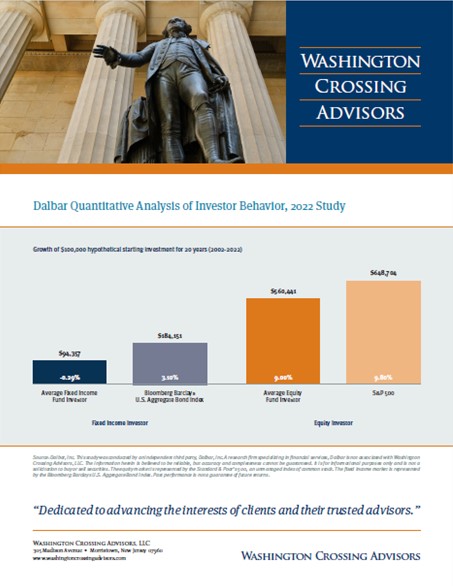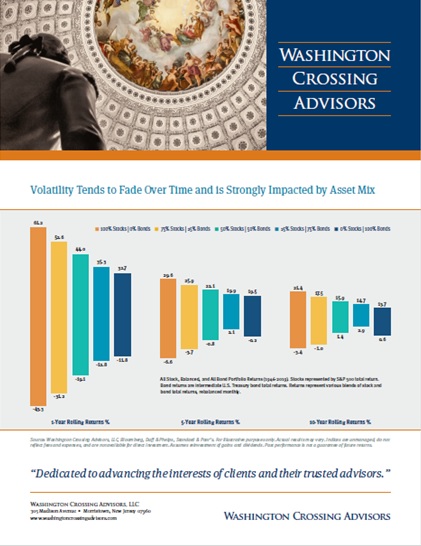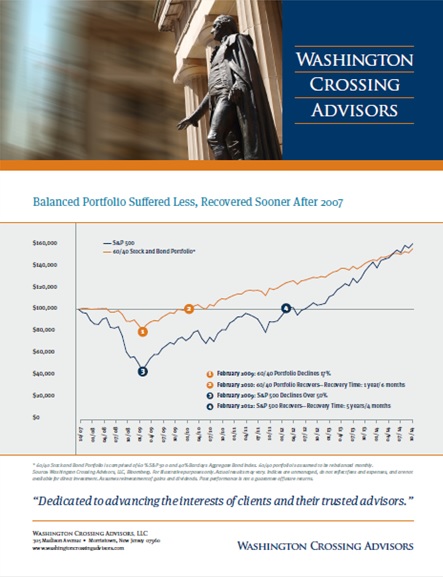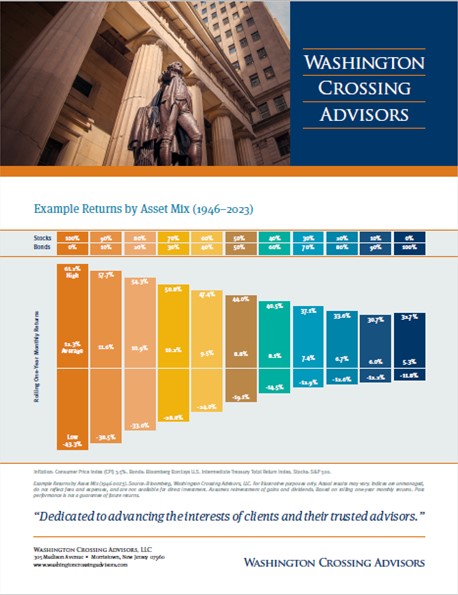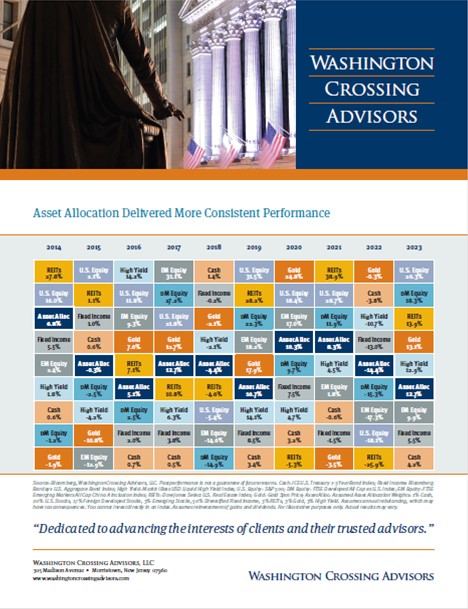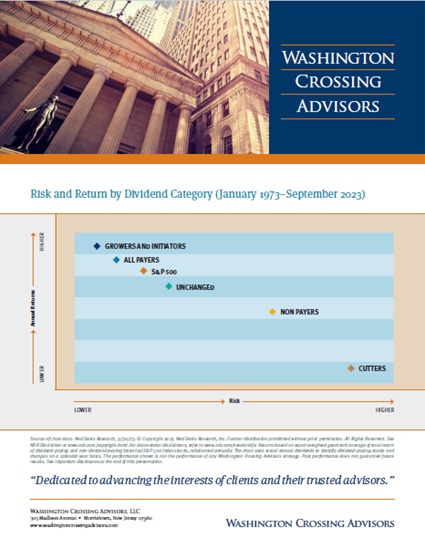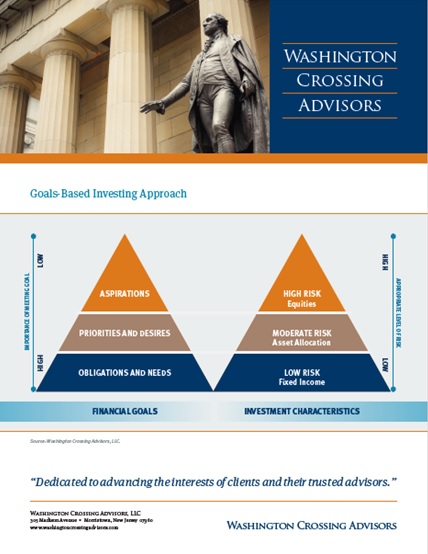Principle 1: Avoid Costly Emotions
Emotions can lead to costly decisions. A recent study by Dalbar, Inc. shows that investment results are more dependent on investor behavior than on fund performance. Mutual fund investors who hold on to their investments tend to be more successful than those who try to time the market.
Principle 2: Expect Market Declines
Periodic market declines are a normal part of investing, but can seem frightening when they do happen. During those times it is easy to become shortsighted which can lead to bad decision making.
Principle 3: Understand Volatility
History has shown that volatility tends to fade over time. Moreover, one of the best ways to adjust portfolio volatility is by choosing a mix of assets that best suits you.
Principle 4: Consider a Balanced Approach
A balanced approach goes hand in hand with understanding the volatility mentioned above. History has shown that volatility tends to fade over time. Moreover, one of the best ways to adjust portfolio volatility is by choosing a mix of assets that best suits you.
Principle 5: Balance “Now” and “Later” Risk
There is a trade-off between year-to-year swings in portfolios and long-run return. Picking the right mix of assets can go a long way toward the goal of maximizing long-run return without taking on excessive short-term risk.
Principle 6: For Consistency, Consider Asset Allocation
Chasing the latest fad can be costly. One year’s “hot performer” can easily become next year’s laggard. A diversified portfolio across multiple asset classes has tended to deliver a more consistent result over time, which can help you stay the course over time.
Principle 7: Focus on Income Growth, Not Current Yield
From an income perspective, the yield that matters should be the one based on all cash flows over the life of the investment. This is why it is crucial to consider growth in income over time, not just today’s yield. Failing to consider growth could mean missing out on future income potential and/or taking on excess risk.
Principle 8: Match Your Strategy To Your Goals
Your goals should be at the heart of your financial plan. In practice, you may have multiple goals, a varying risk profile, and multiple horizons, making financial planning a complex process. A goals-based investing approach starts with consideration of goals and needs. You and your advisor then estimate how much of your portfolio should be invested in lower-risk assets to meet your most critical needs and obligations. Once these needs are covered, excess portfolio assets can then be allocated toward meeting other priorities and desires. Finally, any excess capital above and beyond basic needs, priorities, and desires can be allocated to “aspirational” goals. This approach typically leads to a well diversified portfolio which can be easily understood and implemented.

